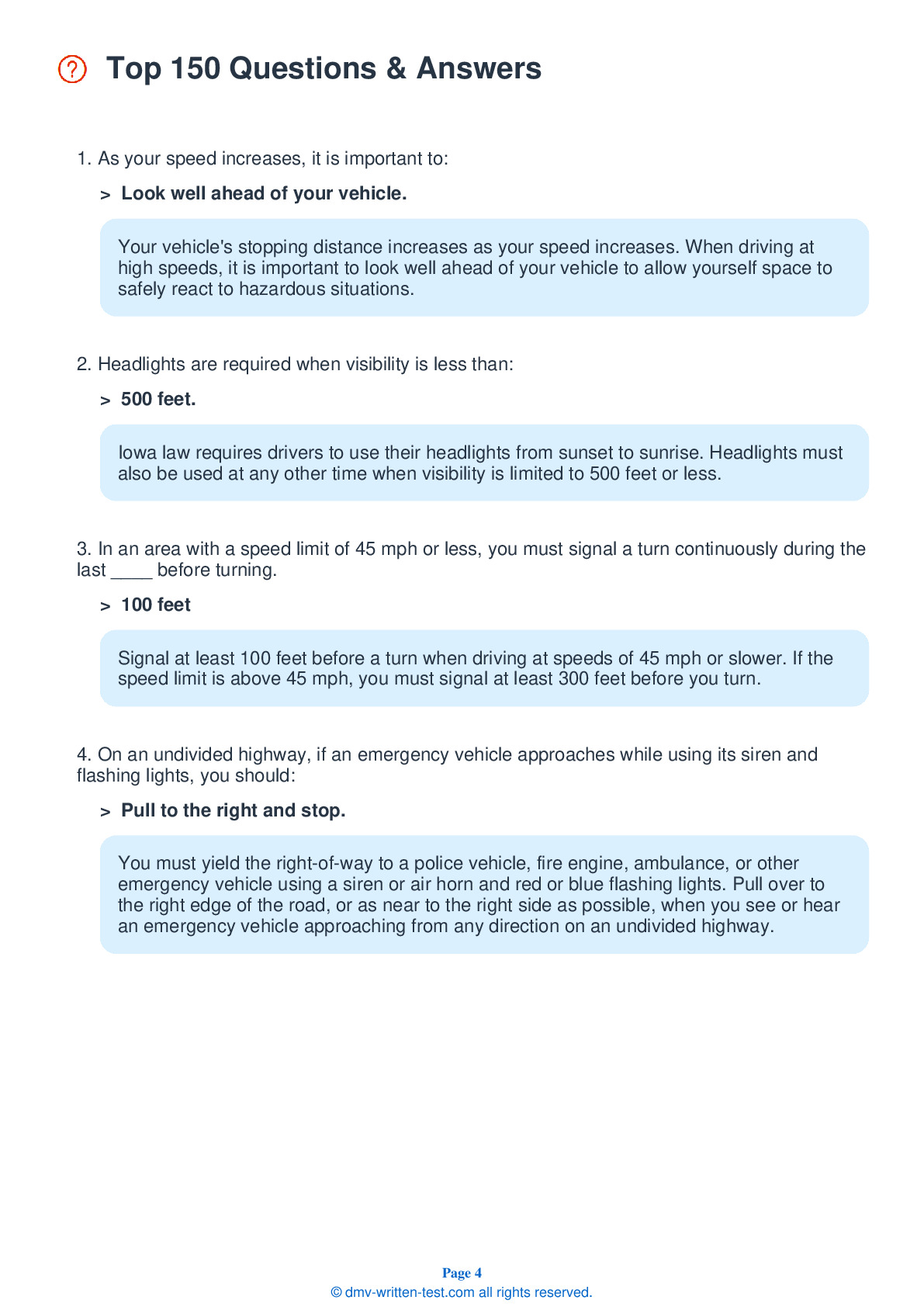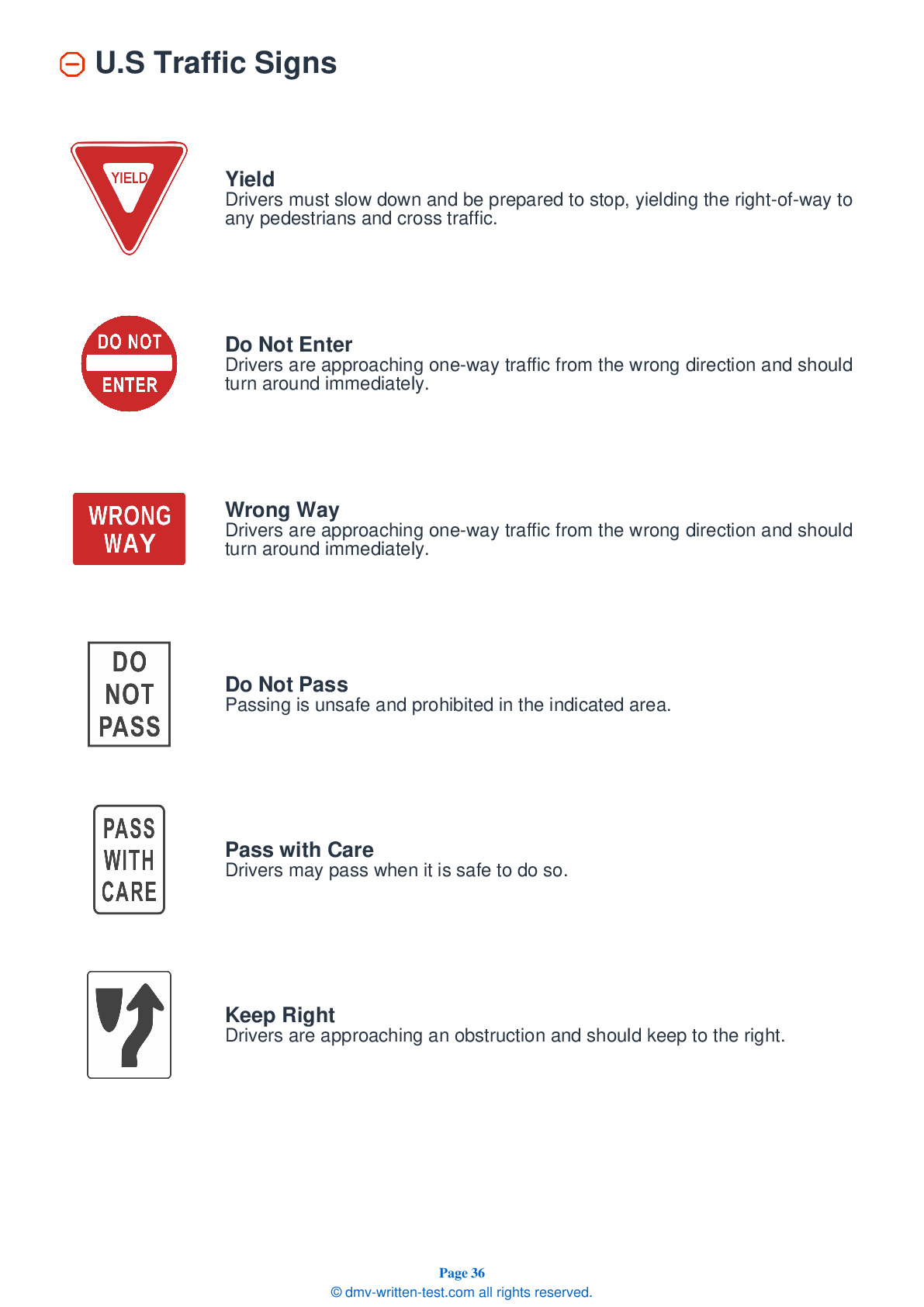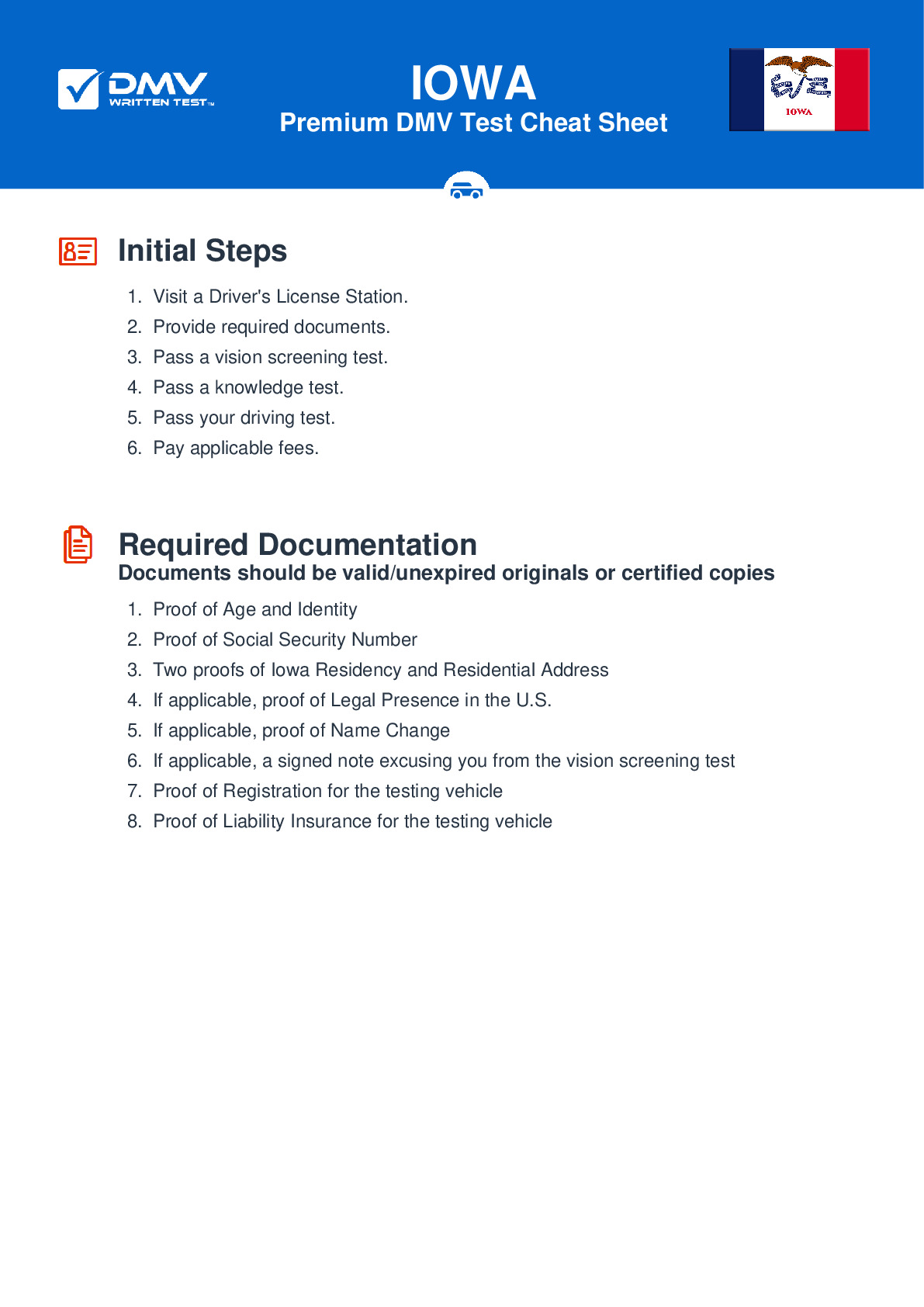2025 Iowa Permit Test 4
The following questions are from real DMV written tests. These are some of the actual permit questions you will face in Iowa. Each permit practice test question has three answer choices. Select one answer for each question and select "grade this section." You can find this button at the bottom of the drivers license quiz. For a complete list of questions and answers for Iowa please visit https://cheat-sheets.dmv-written-test.com/en/iowa/car.
Number of Tests
Number of Question
Passing Score
1. To safely pass a bicycle, you should:
Explanation
When passing a bicyclist, slow down and give them as much space as you can. Bicyclists have much less protection than drivers of motor vehicles and they should not be crowded. Passing a bicycle too quickly can shift the bicyclist off-course.
2. You should not use your horn:
Explanation
When driving near a blind pedestrian, using your horn may be dangerous. Yield to the pedestrian and proceed when it is safe to do so.
3. This sign means:

Explanation
Warning signs are usually yellow with black markings. They alert you to conditions that are immediately ahead. This sign warns that you are leaving a separated one-way highway and will soon be driving on a two-way highway.
4. After passing a vehicle, it is safe to return to your driving lane when:
Explanation
Before you return to your driving lane, be sure you are not dangerously close to the vehicle you have just passed. One way to do this is to look for the vehicle in your inside rearview mirror. When you can see both headlights in your rearview mirror, you may have enough room to return to your driving lane.
5. Which of these statements is true about drinking alcohol and driving?
Explanation
Being under the influence of alcohol affects your judgment. Good judgement is necessary to react appropriately to things that you see or hear while on the road. Even if you are below the legal blood alcohol limit, consuming any amount of alcohol is likely to affect your ability to drive safely.
6. Which of the following commonly causes traffic accidents?
Explanation
Driving too fast for conditions is a major cause of motor vehicle crashes. Being inattentive to surroundings can cause a driver to collide with other vehicles. Most rear-end collisions are caused by drivers following other vehicles too closely.
7. You are approaching a railroad crossing and you do not see or hear a train. You must stop:
Explanation
You must always stop before crossing railroad tracks if flashing red lights are activated, a crossing gate is lowered, a stop sign is posted, a flagger signals you to stop, or a train is visible or so close to the crossing that it would be hazardous to continue driving. If you are unsure if a train is too close for you to safely cross the tracks, stop. Never race a train.
8. If you must park your vehicle in an area not usually used for parking:
Explanation




